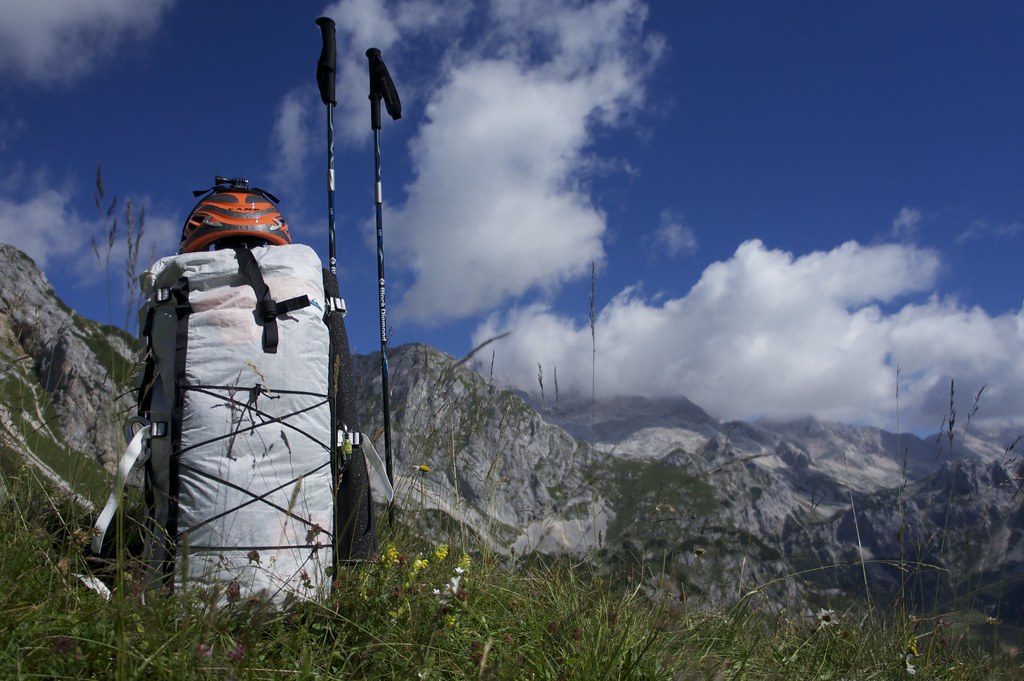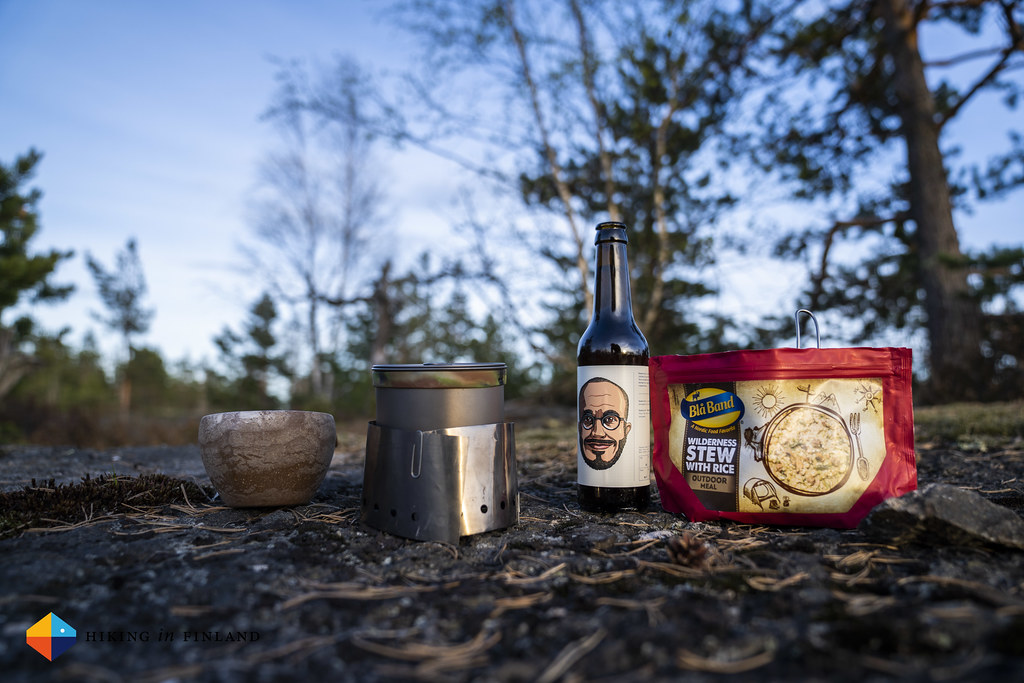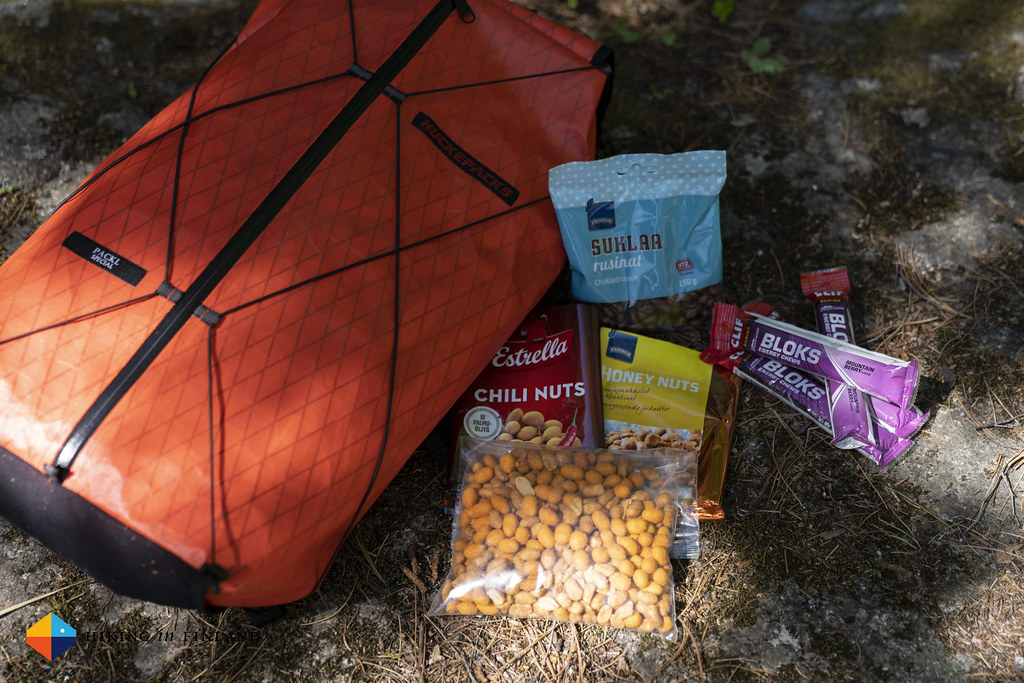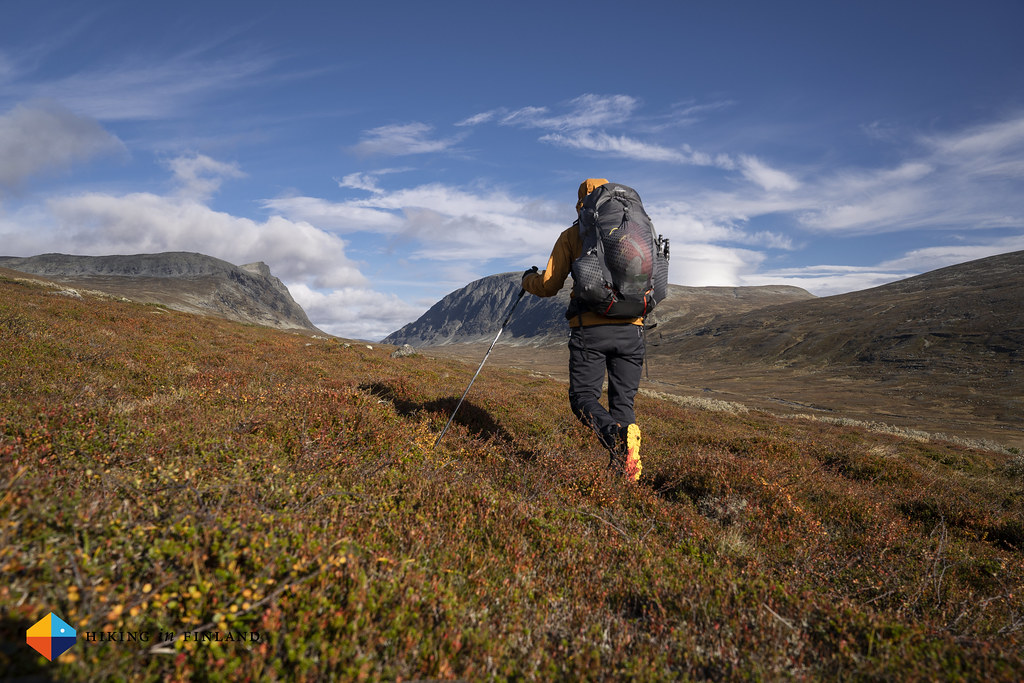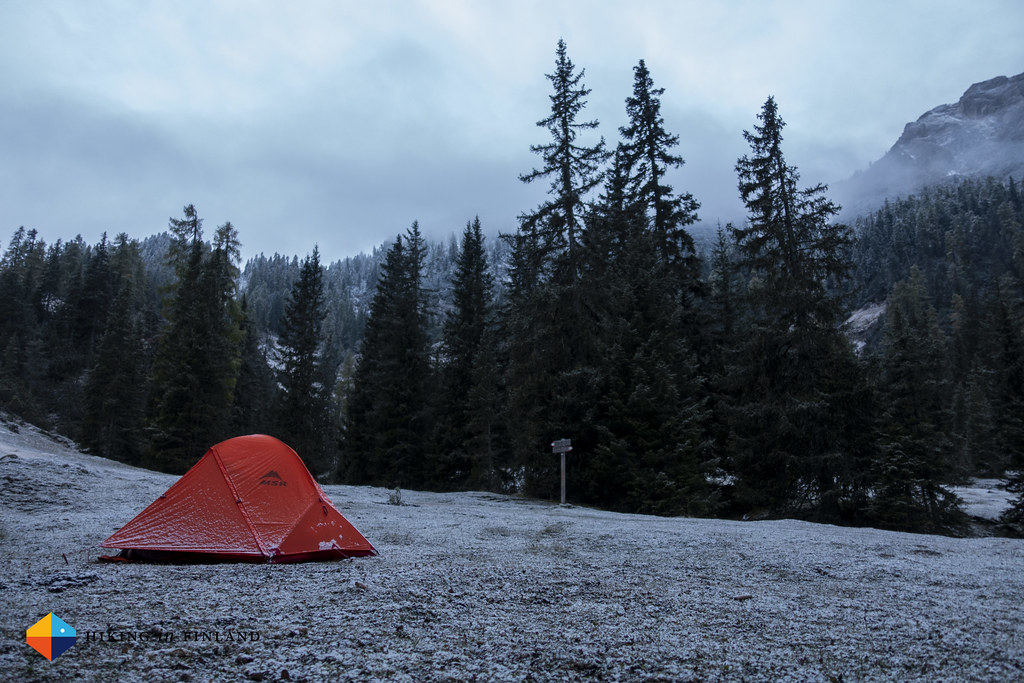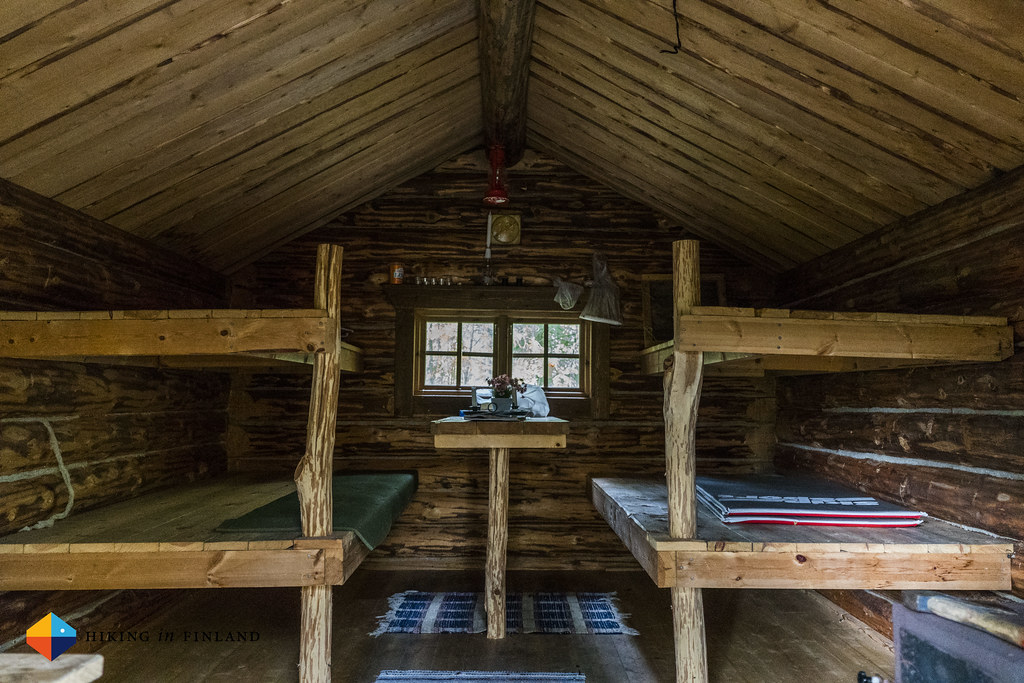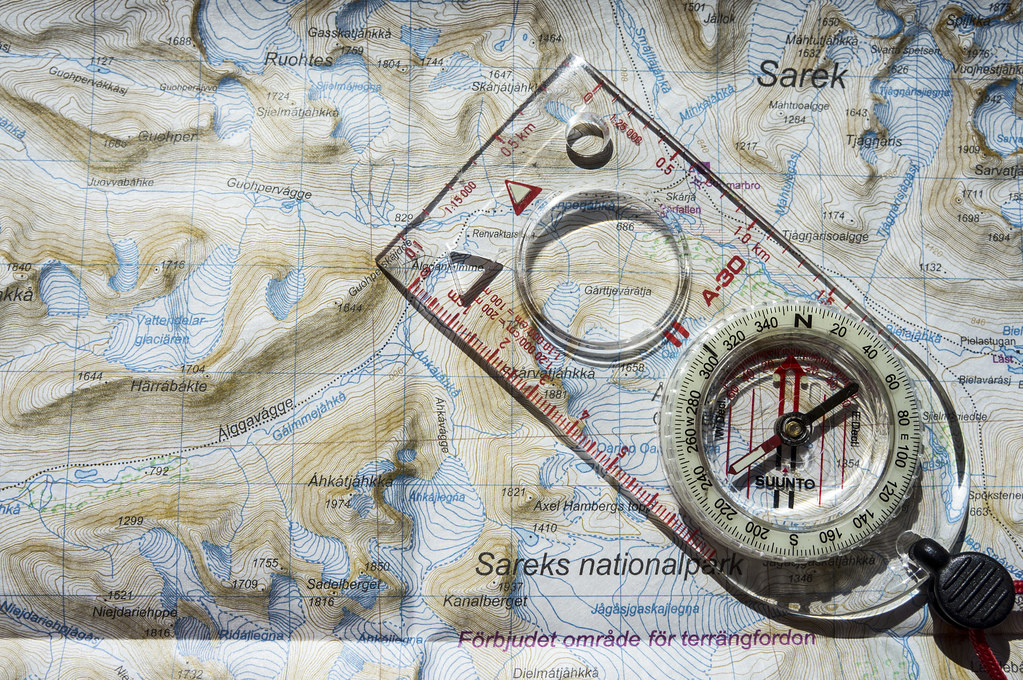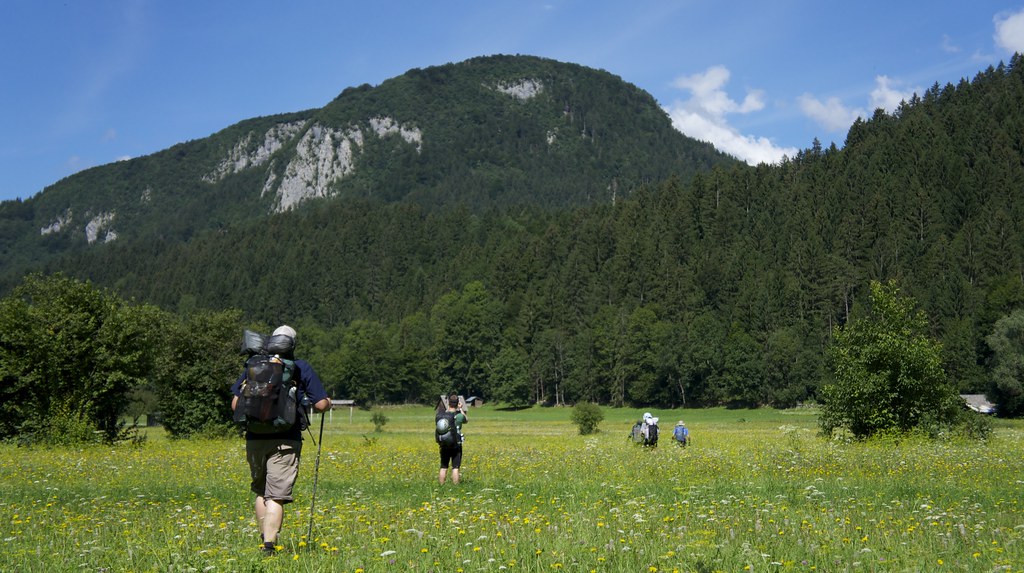NEW to backpacking and wondering which tent, backpack and rain jacket to get? You’ve come to the right place - grab a coffee and start reading this in-depth article for all new outdoor enthusiasts which are planning their first backpacking trip!
Disclosure: In this article there are several Affiliate links to disclose 😊 You can use these AT NO EXTRA COST TO YOU but I get a small provision from the company. As you know: I’m keepin’ it real and tell you how it is - I maintain full editorial control of the content published on Hiking in Finland. Read the Transparency Disclaimer for more information on blogger transparency and affiliate links.
Due to the COVID-19 Pandemic we’re all mostly “stuck at home” in our countries - which isn’t a bad thing at all, as this allows us to go explore where we live and pay taxes! This pandemic also has brought a lot of people into the outdoors, and obviously the first thing you should familiarize yourself with are the Leave No Trace principles so you don’t accidentally leave your trash and poo somewhere where it does not belong - don’t be one of those jerks who throws trash into nature. Now that we have these essential rules out of the way, let me show you the gear you need when you go backpacking. The idea is to help you save money and only get what you REALLY need.
Quick Definition! Hiking: The activity of walking in nature, but sleeping indoors. Backpacking: The activity of walking AND sleeping outdoors in nature.
Clothes
The Easiest and most difficult point right at the start. The easiest because I firmly believe that most people can go hiking in their normal sports clothes on their first trips. If you have a synthetic/ wind-resistant pants or shorts for running or sports, chances are these are fine for your first backpacking trip. Some things to keep in mind, though:
- Don’t wear jeans when backpacking. They are too warm, too heavy, stay wet forever if it rains, and are mostly uncomfortable and restrict your movement.
- Except on the hottest 30°C or more days, don’t wear cotton shirts. Like jeans, they need too long to dry and if it gets cool don’t keep you warm.
- Avoid heavy “hiking” boots, use trailrunning or sport shoes with a good, grippy sole instead.
- Invest into some good socks and underwear for hiking!
- You can take a (fleece) jogging pants, a comfy shirt and possibly some woolen socks for camp along
It is very easy to spend thousands of £$€ on clothes for hiking, and completely unnecessary for a beginner. Some sports clothes or airy fabric trousers with good freedom of movement and maybe some wind resistance are fine, together with a synthetic or Merino wool T-shirt. Most people own a fleece jacket, which works fine for insulation on summer days, and most also own a rain jacket. If you really want to start to invest into clothes for backpacking I’d recommend getting a good pair of light trailrunning shoes. Now, you won’t be running, but these types of shoes are comfortable all day long, you are unlikely to get blisters in them, they have great grip on muddy, wet and slippery terrain and they also are light. Go on a few day hikes before you take them backpacking, to see if they work for you. In 99% of the cases, they do 😊!
A detailed article on garments for hiking and backpacking will follow this month, so stay tuned if this topic interests you!
And finally, under clothes - trekking poles. Some people swear on them for hiking, others are happy without them. I both like them when I need them - for example when fording rivers, hiking through swamps, and demanding terrain, and I also am happy without them. Hence I like Poles which fold up small and are light, so that when I carry them they fits nicely to the side of the pack. If trekking poles are for you - you might want to see for yourself and test some, maybe loan a pair from friends for a hike and see how you get on with them. However, if your shelter needs Poles - you probably will not get around using them!
Kitchen & Water
It’s also easy to spend a few hundred €$£ on the kitchen and water carrying stuff. For the start of your backpacking hobby, get a good water filter like the Katadyn BeFree. This filter is very easy to use, and while there sometimes are some durability issues with the flask the customer service from Katadyn is very good and quickly sends out replacement flasks. You might want to pick up a second light water bottle (I can recommend the CNOC Vecto 2l) if you hike in environments where there’s not a spring every few kilometres and for camp. I also always carry a Kupilka Kuksa - the bigger one is the ideal size to prepare TentMeals in, and also for a big cup of coffee, tea or hot chocolate.
I believe that gas stoves with a Piezo ignition are the most user-friendly for beginners and experts alike, and the Primus Lite+ Stove is the most affordable one in this segment. It is light, compact, available in a variety of nice colours and very easy to use. It works well for two people, and it is fast to bring water to a boil, too. Once you want to go backpacking more it is fine to do your research on other stoves, but for beginners an easy and convenient to use gas stove is the best investment.
Food & Snacks
On a longer backpacking trip food and snacks will be the heaviest thing in your backpack. Food for a week weighs for me around 5 kg, give or take, and happily this gets lighter every day. I have a plant-based diet and it’s completely possible to have nutritious, tasty vegan backpacking meals every day for a week without that you feel like “Uuuagh, again the same?!”. If you eat everything, it gets even easier. My favourite vegan meals are from Tent Meals and my Patreons get a 25% discount on their orders, so it’s totally worth it to join my Patreon tribe and save on these tasty meals. Also FirePot, LYO Food, BlåBand and REAL Turmat make good vegan backpacking meals, and as this is going to fuel your adventure, don’t save money on these. I made that mistake on my first backpacking trips, thinking that a normal “just add water” meal from the Supermarket is just as good, and I a) didn’t feel like eating them after two days and b) they don’t deliver the same amount of calories than the specialized backpacking meals. It feels expensive to spend 7 to 10€ on one backpacking dinner, but it’s really worth it - and if you’d be in a city, you would easily spend more than that on a dinner!
As for Snacks, I am a huge fan of honey-roasted and chili nuts with some chocolate raisins thrown in for variety. I also know that especially the Nuts will make you hugely popular with fellow hikers, so take enough to last you and a friend through the trip :) I also consume the ClifBar Bloks as they are excellent to get fast energy, are tasty, and really easy to use. I have tried normal ClifBars on various trips, but for me they simply are “too much” and I prefer the Bloks + Nuts.
Coffee, Tea and Hot Chocolate are my hot drinks staples when outdoors. I have a minimum of three Naturata Espresso Sticks per day with me, these are easier to source than the equally good Starbucks Via, then one or two bags of tea per day, and one bag of Hot chocolate per day, as my little treat before going to sleep. Other than that I drink water, water, water, just like home =)
Hygiene & First Aid
Thanks to the Pandemic we all know that we should wash our hands, outdoors this is maybe even a tad more important as we usually touch stones, trees, roots, plants and dirt when we scramble up places or walk through nature. So a good bio-degradable soap (I recommend Dr. Bonners Mint) needs to come along, as well as a small bottle of Disinfectant. You always should brush your teeth, so a tooth brush, some tooth silk or a tooth pick, and a bio-degradable toothpaste (I prefer Dent Tabs by far) need to go into the Hygiene kit, and then anything else one might want or need (stuff for contact lenses for example). I also always carry a ClimbOn LipBalm as it is great to not get dry lips and also can be applied to mosquito bites or small cuts. If you are popular with Mosquitos, an insect repellant is good to take along, or you use a headnet and long clothes to keep them off. Similarly sunscreen is useful on hikes where there is no shade and you expect to hike in the sun. You don’t need to buy these things except maybe the soap and disinfectant - use on your first hikes the same things you have at home.
My First Aid kit is absolut minimalist, there’s a small bottle of mint oil (it works great against headaches for me), a few painkillers and band-aids in there, and that is it. I also have here a small repair kit - some patches for my air mattress, some duct tape, a security needle and that’s that. If I really need medical attention I prefer to call for help instead of trying to patch myself up with some surgical dressings which you find in the 1st Aid kits you can buy everywhere. And as in my Hygiene and First Air Kit I also have a “large” towel I can use that as a bandage if I feel I can take care of myself. Speaking of the towel, I long thought I don’t need it, but it has proven to be something that is multi-functional and hence comes along again: I can dry myself after a dip in a river or lake, wipe the dew from my shelter in the morning, hold a hot pot with it or, as above, use it as a band-aid 😃
Backpack
Now actually I’d put the backpack as the latest item you buy, but as this item sits totally in-between day hiking and backpacking I feel I can not talk about it at the end. However, I recommend getting this as the last item if possible, simply as it means you can purchase one which fits all the gear and food which you will have for your backpacking trips. Backpacks are a difficult topic and what works for one person does not necessarily work for another one. If you have a small, local outdoor shop go visit them, but don’t let them sell you the most expensive or heavy backpack. Osprey and Gregory are two brands which make nowadays good lightweight backpacks with the Exos, Levity and Optic (women models are available for these, too!) and these are the models you should ask for in your shop. A backpack which has around 50 l is a good volume to aim for, with some careful packing it is good for all the gear a backpacking beginner takes along, plus the food, and this size pack also still works fine for day hikes as you can compress them nicely.
Now real ultralight backpacking brands like HUCKEPACKS, Sierra Designs, Six Moon Designs and Gossamer Gear, to name just a few, are pretty much only available online. If you want, it is totally worth it to purchase one of their backpacks, though you’ll need to measure your back length, make decisions on materials and features you want, which is already quite a bit of research - of course you just can read my reviews and watch my videos to do that research, and buy accordingly 😃 But again, I believe that a beginner should visit a independent, local gear shop and ask for one of these backpacks mentioned above, and try if they work for her or him. So far 100% of the people who got one of these packs after my recommendation are really happy with them, which is why I feel confident in recommending them (they are great packs, too!). If you then decide to pursue backpacking as a hobby you can get one of the lighter packs from the cottage brands!
Shelter
While a backpack usually doesn’t cost more than 200€ with the shelter and sleep system we get into an area where things get pricey. My recommendations here are to get good quality kit which does not break the bank for a beginner, if one wants to go backpacking more there’s always the option to get something different. I think most people want something which keeps bugs out (as them 🕷 🦂 are out in force in the summer). The Double Rainbow from Tarptent is a proven design at a really good price. A tent with a similar construction, slightly heavier but way easier to get in Europe and elsewhere, is the MSR Elixir 2. If your budget is a bit higher then the Big Agnes Fly Creek HV UL2 or the Six Moon Designs Lunar Duo Explorer 2P Tent are very good picks.
I myself really like to sleep under a Tarp or in a Pyramide-style shelter. The Locus Gear Hapi Sil is an amazing Pyramide tent, the Gossamer Gear Twinn Tarp is an absolute Classic which is easy to pitch and has a lot of dry space under it, and the As Tucas Millaris Bivy Sack works with either of these shelters or on it’s own if the sky is clear!
If you go backpacking in Finland, Sweden or Norway you also might be able to not take a shelter at all, as you could sleep simply in one of the hundreds of free, open Wilderness Huts. The problem which might arise is that the hut is full and you can’t sleep there, so having a shelter along is always recommended. There are Huts in Finland which you can reserve, so the “The Hut is full” Problem won’t arise. And while these huts are AMAZING I do like to sleep outside, hear the birds chirp and the wind blow through the leafs. Plus you won’t be awoken by other hut inhabitants when they leave at 5:00 o’clock.
Sleep System
Your sleep system consists of a sleeping pad, a quilt or sleeping bag and possibly a pillow (I use a insulation jacket and fold it into a pillow). The Therm-A-Rest NeoAir Uberlite is an outstanding mattress, but maybe beginners are a bit better off with getting a Therm-A-Rest NeoAir XLite as it is more durable and cheaper while still being light and compact. If you like to sleep on a hard underground, then the Exped Flexmat Plus is a great pick as it can not break and at 40€ it is really cheap, while being very comfortable.
At home you sleep under a duvet, and outdoors the next best thing is a quilt. I really like my As Tucas Sestrals Quilt, also the enLIGHTened Equipment Revelation Quilts are a very good pick, and if money is no issue I suggest getting a Katabatic Gear Quilt. If social and sustainable issues are important to you, have a look at the good Vaude Alpstein 450, which is a really good quilt. Again, there’s a lot of options here, but amongst those which I mentioned you can find something which suits your budget and needs!
Navigation, Maps and Extras
The final point on my list is about the small items which are needed to not get lost and to remember. A map and compass are pretty useful when going into nature, and I recommend for the first few trips that you stay on trails and use the map to get safely from A to B. Also an App like HikePack is very good to navigate (and there’s a free version!), and might be easier to use than a compass and map for beginners (despite this, the latter are important skills to learn and master!). I also carry a small Field Notes Brand notebook + pen with me, and obviously a camera. Unless you’re already a photographer and own a good camera, just use your phone for photos. If this is an aspect you’d like to pursue more passionately at some point, feel free to hit me up on Twitter and ask me about camera recommendations! Finally, a headlamp like the Petzl Bindi is good to have along if you need to get out at night or if you get up early/ stay up late. Here in the North it’s something you not necessarily need in the summer, as it doesn’t really get dark.
Conclusion
The best thing is if you simply could ask a good friend (like me, right Tumppi ;) who totally is into outdoor stuff and has a bunch of gear to kit you out for your first backpacking trip. That way you can see what works for you and don’t need to make purchases which may work well for you. But not everyone has that friend, so the next best thing is to do your research online, learn from other people’s mistakes and experience, and buy the right gear from the start (this does involve trusting these friends, and not deciding to throw away all the recommendations and simply buy what you think is best, just to realize after some use that the knowledgable friend actually was right all along…). To make checking the gear you have & need easier I made this Checklist which you can copy & paste or print out. With the list in your hands you make sure you don’t waste money on kit which you don’t need, and my tips here hopefully help you figure out which gear is worth getting. The most important thing, however, is to enjoy being outdoors.
Backpacking in nature is the single best way to connect to the natural environment, learn to appreciate it and see why it is so important to protect wild places. For us humans going into nature has a tremendously positive effect on our mental health, creativity and also our physical health, as several scientific articles have highlights in the past couple of years. And the whole experience of backpacking gets more enjoyable & fun the less unnecessary & heavy equipment we carry along while outdoors. With this article read you now know what gear you need for your first backpacking trip, and I hope it will be a most memorable one! Feel free to reach out on Twitter to tell me about it, and if you need personalised gear recommendations become a Patreon and we can chat about backpacking & gear on Discord!
If you enjoyed this article Please support me on Patreon as this COVID-19 Pandemic means a severe loss of income for me (and you get Discount codes for kit from partners!) or buy me a coffee - I work Full-Time on Hiking in Finland to bring you inspiring trip reports, in-depth gear reviews and the latest news from the outdoors. You also could subscribe to the rarer-than-ever Newsletter and follow along on Instagram, Twitter, Facebook and Youtube for more outdoorsy updates!



